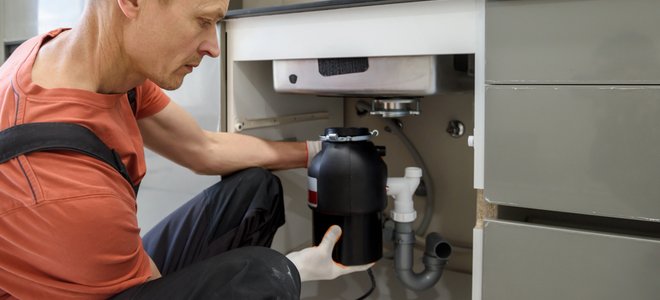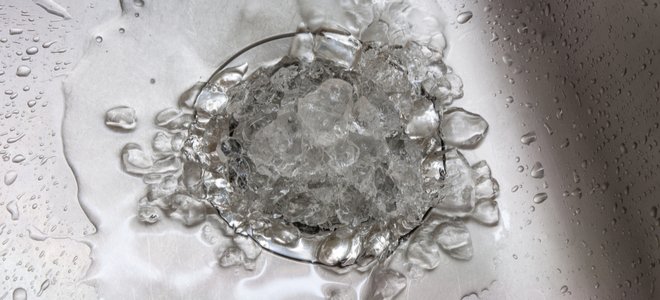
Your garbage disposal is one of the hardest working appliances in the kitchen, but feeding scraps into its jaws is bound to result in some serious stink. Keep those funky fumes from fouling your otherwise clean kitchen by including your disposal on a regular cleaning schedule.
Don’t Feed it Garbage
So let’s clarify—we know it’s commonly referred to as a garbage disposal, but we ask that you think of it as a kitchen disposal unit. With a name like garbage disposal, you’d think it was designed to grind up anything and everything. Wrong! Garbage goes into the appropriately named garbage can (which could also use a cleaning now and then), whereas kitchen disposal units can handle bits of food that remain on the dishes after scraping the leftovers into the trash.
Putting large amounts of food and other waste materials can lead to drainage and mechanical issues, and increase the probability of sink stink. Instead of dumping food waste down the disposal, consider the humble compost heap, which could benefit from vegetable peels and other cast-offs. If you’re curious about alternatives, you might enjoy looking into other options like vermicomposting or bokashi.
Bottom line—think of your disposal as a last line of defense, not a go-to garbage solution.
What’s That Smell in the Sink?
That smell is what happens when bits of trapped food become a breeding ground for bacteria. Things are rotting down there, folks.
And then there’s the mold forming under the rubber splash guard that could also contribute to that righteous funk. Including the disposal on your list of weekly cleaning chores will help keep that smell at bay.
It’s not all bad, though. An inadvertent whiff of the sink stink makes an effective appetite suppressant if you’re fighting the extra pounds. So there’s that.

How Often Should I Clean It?
That’s entirely up to you. If you’re a busy person and rarely have time to cook a meal, and even more rarely have time to use the sink for anything other than rinsing off a piece of fruit, you may never have an issue that would make you come looking for a solution like this.
If you frequently use the sink and the disposal, it might make sense to have a weekly cleaning schedule. Not to worry though, it’s an easy process, and afterward, you’ll wonder why you hadn’t done this sooner.
Remove the Residue
Let’s start by turning to another kitchen workhorse—the freezer. Drop six ice cubes into the disposal, along with one tablespoon of baking soda, a couple slices of lemon, and a teaspoon of bleach. Then top the whole thing off with another six ice cubes.
Turn the disposal on, but don’t run water while it’s grinding through the ice mixture. Once the ice is completely ground up (you’ll hear the difference), turn on the cold water and leave the disposal running for another 30 seconds.

Clean the Rubber Splash Guard
If you’ve never thought of cleaning that black rubber piece in the opening of the disposal unit, we don’t blame you. It’s just kind of there. But think about its purpose, blocking splashes from becoming airborne when you start up the grinder. Every time you flip the switch, that splash guard gets coated with grease and food residue, creating a happy home for mold and bacteria.
Luckily, that piece is removable, so you can give it a good scrubbing with a paste made of baking soda, a natural antibacterial product. If the grime isn’t too serious, you could also toss it into the dishwasher for a heavy-duty clean and sanitize cycle. Doesn’t matter how you do it—just clean that sucker and get on with your life.
Keep Things Flowing
In addition to not putting garbage down the disposal, there are other things to remember so you can keep this kitchen ally in good working order.
Before you dump anything into it, turn on the cold water. Keep the water running while the disposal is doing its thing, and leave the water on (about seven seconds) after you turn the disposal off. This final flush of water pushes the small particles of food through the pipes, moving everything through so they don’t settle at the bottom of the P-trap, where they’ll most certainly kick up a bacteria party and get things smelling all gross again.
A little DIY know-how can keep your kitchen disposal smell-free and in top-notch working order with minimal effort.
More From Doityourself Would replacing my kitchen sink plumbing help prevent future clogs? Why Is Your Kitchen Sink Clogged on Both Sides? What You Can and Can't Put Down Your Garbage Disposal Terms of the Trade: What Is a French Drain System? How to Get Rid of That Funky Garbage Disposal Smell
Source link : https://www.doityourself.com/stry/3-garbage-disposal-cleaning-tips












